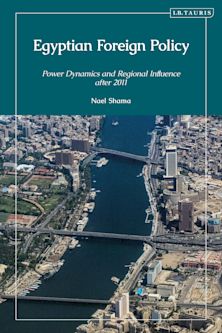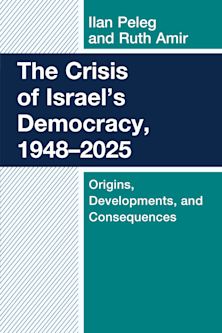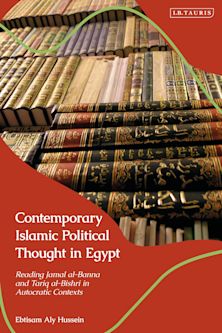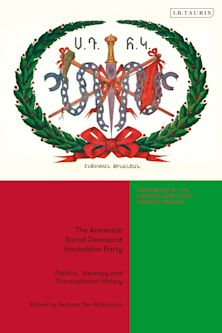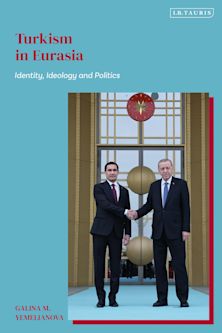- Home
- ACADEMIC
- Politics & International Relations
- Middle East Politics
- Revolutionary Egypt in the Eyes of the Muslim Brotherhood
Revolutionary Egypt in the Eyes of the Muslim Brotherhood
A Framing Analysis of Ikhwanweb
Revolutionary Egypt in the Eyes of the Muslim Brotherhood
A Framing Analysis of Ikhwanweb
This product is usually dispatched within 2-4 weeks
- Delivery and returns info
-
Flat rate of $10.00 for shipping anywhere in Australia
You must sign in to add this item to your wishlist. Please sign in or create an account
Description
The Muslim Brotherhood, which was founded in Egypt in 1926, has been at the forefront of the resurgence of political Islam in the Middle East. It has also endeavored to reach out beyond Egypt and the Middle East, to an international audience, increasing its media campaign in English. This outreach is the focus of the book, which delves into the media strategies and ventures of the Muslim Brotherhood by studying how it has used its official English website to frame its political ideologies and its role in the 2011 Egyptian uprising.
Table of Contents
Chapter 2: The Egyptian Muslim Brotherhood: A Brief History
Chapter 3: The 2011 Egyptian Uprising
Chapter 4: From the 2010 Parliamentary Elections to the 2011 Constitutional Referendum
Chapter 5: The Post-Uprising Era: Between Clashes and Parliamentary Elections
Chapter 6: From the 2012 Presidential Election to the 2012 Constitutional Referendum
Chapter 7: The Discussion
References
Index
Product details
| Published | 15 Sep 2021 |
|---|---|
| Format | Paperback |
| Edition | 1st |
| Extent | 176 |
| ISBN | 9781538158265 |
| Imprint | Rowman & Littlefield Publishers |
| Dimensions | 231 x 153 mm |
| Publisher | Bloomsbury Publishing |
About the contributors
Reviews
-
The ‘Arab Spring’ brought the Muslim Brotherhood to power in Egypt but the Islamist movement was not able to, or allowed to, retain authority. El-Nawawy and Elmasry’s insightful account provides a helpful guide to a failed political revolution, despite the group’s sophisticated communication strategy. Highly recommended.
Daya Thussu, professor, Hong Kong Baptist University, author of International Communication: Continuity and Change, third edition (2019)
-
Mohammed el-Nawawy and Mohamad Hamas Elmasry add a crucial perspective on the unfolding drama of the Arab revolutions by giving us a detailed account of the normative and conceptual limitations of an Islamist movement at the tether end of its political potency. The implications of this impeccable piece of scholarship are far beyond the failed media strategies of an Islamist movement. It highlights the rise and fall of a political theology that has become its own worst enemy.
Hamid Dabashi, Professor of Iranian Studies and Comparative Literature, Columbia University
-
Marshalling a wealth of new evidence through a theoretically-informed analysis, Mohammed el-Nawawy and Mohamad Hamas Elmasry offer new insights into the writings and media strategies of Egypt’s largest Islamist movement in the aftermath of the 25 January Revolution. This book will be essential reading for anybody interested in the rise and fall of the Muslim Brotherhood in Egypt.
Neil Ketchley, Lecturer in Middle East Politics, King's College London













